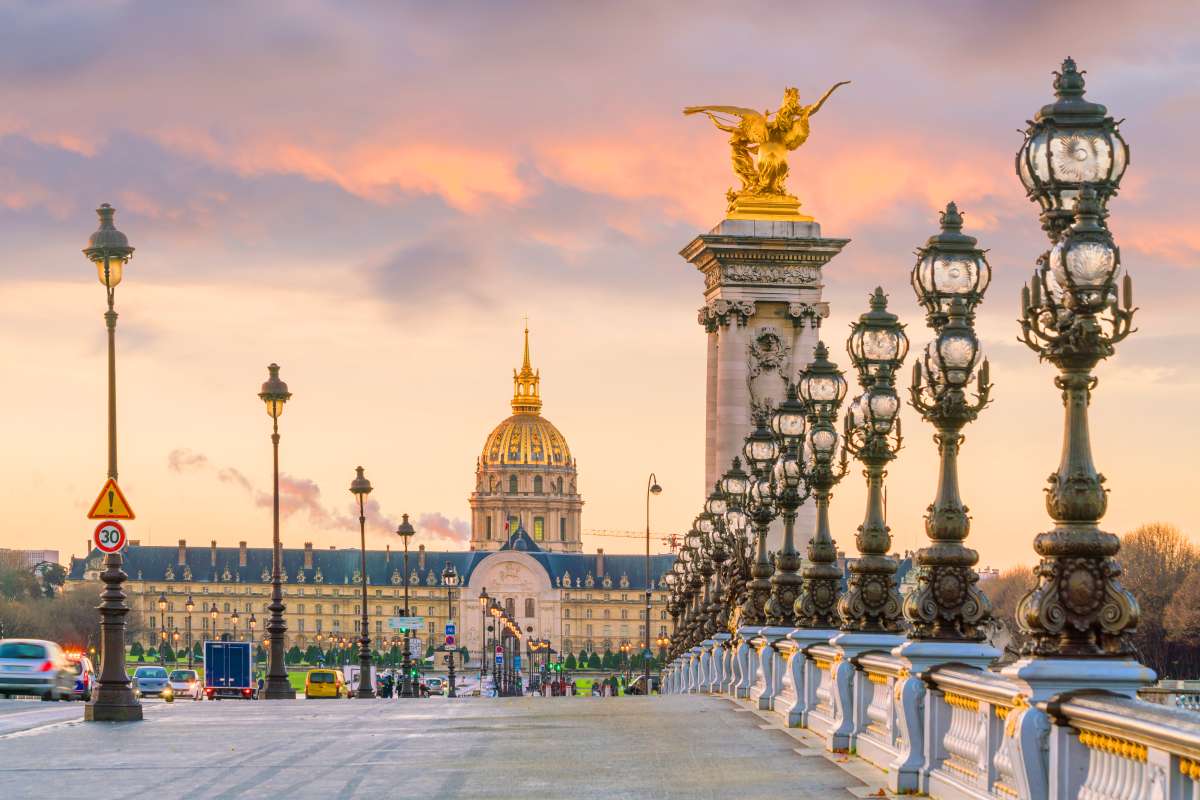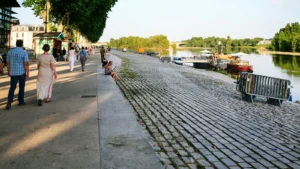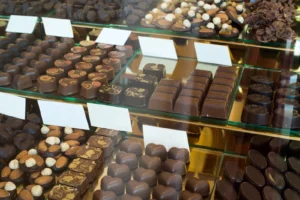France is a country that has never worn the same face twice. From the frost-laced rooftops of Paris in January to the golden vineyards of Burgundy in October, the rhythm of French life shifts beautifully with each passing season.
For travelers planning a visit in 2025, timing is more than a personal preference—it’s a strategy that can shape the entire experience. Understanding the best time to visit France is essential, as seasonality affects everything: crowds, prices, regional activities, and even cuisine.
Spring brings bursts of color and a sense of awakening, while summer offers long days filled with festivals and beachside relaxation. Autumn invites slower, sensory-rich experiences through wine harvests and historic towns glowing with fall light. Winter, often overlooked, unveils an entirely different France—quieter, more intimate, and deeply festive.
This season-by-season guide breaks down exactly what to expect across France in 2025, helping travelers align their trip with their ideal pace, interests, and budget.
Spring in France (March to May)
Photo from unlimphotos. Beautiful spring landscape of golf course in Saint Saens, France
Spring in France offers mild weather, longer days, and fewer tourists. From March to mid-May, travel costs remain reasonable, cultural events return, and most regions are lively without the peak-season crowds. For those considering the best time to visit France, spring is a practical choice for sightseeing before summer prices and visitor numbers rise.
What to Expect from Spring Weather in 2025
- Paris & Northern France: March begins cool (around 11–13°C), with April bringing rain but more daylight. By May, temperatures rise to the high teens or low twenties.
- Southern France: Provence and the Riviera will be springlike by late March. In May, temperatures in Nice, Marseille, and Avignon may reach 18–22°C.
- Eastern France: Regions like Alsace and Burgundy warm more slowly but benefit from dry, crisp weather in May—ideal for vineyard visits and hiking.
Best Regions to Explore During Spring
Photo from unlimphotos. The Clos Normand house of Claude Monet garden
France’s diverse geography allows for very different experiences within the same season. Spring lends itself well to cultural discovery, wine country exploration, and leisurely countryside travel.
Île-de-France: Springtime Paris and Beyond
Paris in spring delivers more than scenery—it reopens the city’s outdoor life. Sidewalk cafés become busy again, gardens like Jardin du Luxembourg and Parc Monceau fill with locals, and exhibitions return to full swing. Outside the city, spring is an excellent time to visit Versailles, Fontainebleau, or Monet’s garden in Giverny, all of which are quieter and greener before June.
Provence and the French Riviera
This region benefits from an early spring. In March, almond blossoms bloom in the countryside; by April, Aix-en-Provence hosts street festivals and outdoor markets. Nice and Cannes offer an ideal mix of mild seaside weather and cultural activity without peak-season congestion. While lavender season doesn’t begin until late June, wildflowers and vineyards in areas like Luberon, Gordes, and Roussillon provide striking color throughout May.
The Loire Valley: Castles and Cycling Paths
Spring brings renewed life to the Loire. Château gardens—especially at Villandry, Chambord, and Chenonceau—are in full bloom by late April. The region is also famous for cycling paths along the riverbanks, weaving through sunflower fields and charming towns. Wine tastings in Saumur and Vouvray are intimate and often paired with spring dishes like local asparagus and early-season goat cheese.
Burgundy and Alsace: Early Season Wine Travel
Though grapevines remain bare, cellar doors are open, and spring is a rewarding time to visit without tourist traffic. Beaune, Chablis, and Dijon offer profound wine-tasting experiences in small group settings. In Alsace, medieval towns like Eguisheim and Ribeauvillé are even more photogenic with spring foliage and minimal crowds.
Cultural Events and Festivals in Spring 2025
France’s cultural calendar restarts in earnest during spring, and 2025 is no exception.
Major Events to Note
- Printemps de Bourges (April 15–20, 2025): France’s flagship contemporary music festival with dozens of stages and events throughout Bourges.
- Cannes Film Festival (May 13–24, 2025): Although primarily an industry event, the city becomes a cultural hotspot with outdoor screenings, exhibitions, and nightly celebrations.
- Easter (April 20, 2025): Observed widely across France with processions, local bakery traditions (including “brioche de Pâques”), and temporary closures in many towns.
Travel Insights for Spring Trips
Packing and Weather: Spring weather is unpredictable. Bring layers, a waterproof jacket, and closed-toe shoes for cobblestones. Sunscreen is essential by April in southern France, especially for outdoor activities.
Transportation: March and early April allow flexible bookings. After Easter, TGV lines like Paris–Avignon and Paris–Lyon get busy. Reserve train tickets and boutique hotels for May at least four weeks in advance.
Dining and Wine: Spring menus feature trout, baby vegetables, and wild garlic. Family-run wineries offer more personal visits in spring than during harvest. Rural restaurants reopen full-time by late March, with easier reservations than in summer.
Summer in France (June to August)
Summer is France’s busiest travel season. Cities are lively, villages host festivals, and beaches draw heavy crowds. For 2025, early planning is essential—last-minute bookings mean higher prices and long waits. If you’re wondering about the best time to visit France, summer is a vibrant option, though it’s also the most crowded.
The weather is warmest and driest. In July, Paris averages 23–28°C; southern regions often exceed 30°C. Extended daylight hours (past 10 PM) allow time for outdoor dining, walking, and concerts. Crowds peak during school holidays from early July to late August.
Where to Go in Summer and Why
Photo from unlimphotos. Eiffel Tower and river Seine at a summer evening in Paris, France
France in summer is not a one-size-fits-all experience. Some regions thrive with energy, while others provide peaceful alternatives for those looking to escape the crowds.
Paris: Iconic but Intense
In summer, Paris draws large crowds to top sites like the Eiffel Tower, Louvre, and Montmartre, especially in July and August. Still, the city adapts well to events like Paris Plages and open green spaces such as Parc Monceau and Buttes-Chaumont.
Visit in early June or late August for fewer crowds. Evening options like museum late hours, open-air films at Parc de la Villette, and concerts at Sainte-Chapelle offer a calmer experience.
French Riviera: Sun-Drenched Coastlines and Coastal Glamour
The Côte d’Azur peaks in summer, with towns like Nice, Cannes, and Saint-Tropez hosting global visitors and events like the Cannes Film Festival. For a quieter experience, smaller cities like Villefranche-sur-Mer, Eze, and Menton offer coastal views and local charm.
Beach spots fill fast in August, so advance reservations are a must. Explore beyond the beaches with boat tours from Antibes, visits to Porquerolles Island, and night markets in Grasse.
Provence and Southern Countryside: Lavender and Hilltop Villages
July is peak lavender season in the Valensole Plateau, Sault, and Luberon. The sight and scent of lavender fields at full bloom draw visitors worldwide. Though crowded, this is one of France’s most photogenic and sensory-rich experiences.
Beyond the fields, summer in Provence means bastide markets, late-night art walks, and town festivals such as Festival d’Avignon, a world-renowned theatre and performing arts event that takes over the historic city in July.
Photo from unlimphotos. French riviera view from high.
The French Alps and Pyrenees: Green Slopes and High-Altitude Refuge
France’s mountain ranges are not limited to winter. The Alps and Pyrenees offer crisp air, open trails, and alpine lakes in summer. Resorts like Chamonix, Annecy, and Les Deux Alpes become hubs for hiking, cycling, and paragliding.
Lodging is more affordable than in winter, and mountain towns tend to be less crowded than the beaches. The Tour de France, which runs through July, passes through several alpine stages, bringing energy and celebration to the mountains.
Atlantic Coast and Western France: Surf, Sand, and Space
The Atlantic Coast is a strong alternative for a cooler, more spacious summer experience: Biarritz, Île de Ré, and Arcachon balance beach culture with family-friendly infrastructure. Surfing has been popular since June, and seafood lovers will appreciate the coastal gastronomy, particularly in Brittany and Pays de la Loire.
Summer 2025 Festivals and Events to Watch
France’s summer calendar is dense with cultural offerings, some dominating their entire regions.
Notable National Events
- Tour de France (June 28–July 20, 2025): Expect significant activity in towns along the race path, including road closures and celebrations.
- Bastille Day (July 14): France’s national holiday includes military parades, fireworks, and communal celebrations in every major city and town.
- Festival d’Avignon (July 4–25, 2025): One of the world’s most important performing arts events. Book accommodations early—Avignon fills up months in advance.
Regional Celebrations
- Jazz à Juan (Antibes): An open-air jazz festival featuring international stars.
- Les Rencontres d’Arles (Arles): A renowned photography festival that takes place throughout the summer.
- Rock en Seine (Paris, August 22–24, 2025): A major music festival at Domaine National de Saint-Cloud, closing out the season with international headliners.
Don’t miss the French Food Festivals happening throughout the summer across every region—perfect opportunities to sample local dishes, wines, and culinary traditions in their place of origin.
Practical Considerations for Summer Travel
Photo from unlimphotos. Famous village in french alps
Crowds: July and August are peak season. Book trains, rentals, and hotels months ahead. French school holidays (July 6–August 31) mean busy roads, attractions, and local shops.
Packing: Prepare for heat waves. Bring light clothes, sun protection, and check if your hotel has AC. Reserve beach gear early. Evenings in the mountains can be cool—pack layers.
Dining: Summer meals feature fresh produce and chilled rosé. Outdoor dining is popular. In high-traffic areas, reserve tables 1–2 days in advance.
Autumn in France (September to November)
Photo from unlimphotos. View from Pont Alexandre III in Paris, France
Autumn in France brings golden vineyards, harvest festivals, and a calmer pace. It’s ideal for food lovers, photographers, and cultural travelers. Crowds thin, and prices drop after summer. Visiting during harvest is also an opportunity to explore some of the Best Wine Regions in France at their most atmospheric and flavorful.
September is still warm in the south. October offers crisp air and fall colors. November turns cooler. Expect 10–20°C across regions, with occasional rain, mainly in the north and west.
Where Autumn Excels: Regional Travel in the Fall
Burgundy and the Loire Valley: Peak Wine Travel Season
Autumn is Burgundy’s prime season. September marks the grape harvest. While some wineries pause visits, others offer vineyard walks, harvest lunches, and cellar tastings of freshly pressed vintages. Beaune is especially lively, with wine auctions, local markets, and oenology workshops drawing global visitors. Chablis, Côte de Nuits, and Mâconnais welcome wine tourists while staying quieter than in summer.
The Loire Valley shifts from blooming gardens to golden landscapes. Late September and early October are especially scenic. Local wines like Chinon, Vouvray, and Sancerre pair naturally with seasonal dishes, making it an atmospheric and flavorful time to visit.
Alsace: Fairytale Villages and Gastronomic Depth
Autumn in Alsace is postcard-perfect. The half-timbered villages—Riquewihr, Eguisheim, and Kaysersberg—are framed by vineyards in shades of rust and gold. During October, the Alsace Wine Route becomes one of the most scenic drives in Europe, and many small producers open their cellars for walk-in tastings.
Culinary events also pick up. Harvest markets feature seasonal specialties like wild mushrooms, game, and freshly pressed grape must. Strasbourg and Colmar host regional food festivals and begin preparations for their famous winter markets by mid-November.
Provence and Southern France: Slower Days, Softer Light
Autumn in Provence brings cooler days and quiet streets. Cities like Aix-en-Provence, Arles, and Uzès stay warm into October. Olive harvests begin, vineyards deepen in color, and migrating birds return to the Camargue—ideal for eco-tourism and photography.
On the Riviera, beach crowds fade. Nice and Menton still offer seafront dining in October. Grasse hosts fall perfume festivals. By November, the region enters the low season, with lower prices and fewer tourists.
Paris and Île-de-France: Culture Over Crowds
Autumn brings a calmer rhythm to Paris. Locals return in September, and the city shifts into cultural mode with new museum exhibitions, theater openings, and Paris Fashion Week (Sept 23–Oct 1, 2025).
Parks like Bois de Vincennes and Jardin du Luxembourg glow with fall color. By November, the city slows—expect foggy mornings, shorter lines, lower hotel rates, and cozy café escapes.
Key Autumn Events and Local Traditions in 2025
Cultural and Harvest Events
- Journées du Patrimoine (September 20–21, 2025): France’s National Heritage Days. Government buildings, castles, and historical sites open to the public—many for free—for two days only.
- Montmartre Grape Harvest Festival (October 10–13, 2025): One of Paris’s most unique traditions, celebrating the only vineyard in the city with parades, tastings, and folk music.
- Lyon Festival of Lights (Preview installations begin in late November): While officially held in December, light installations appear by the end of November, transforming the cityscape early.
- Beaujolais Nouveau Day (November 20, 2025): Celebrated across France with wine tastings, themed dinners, and music to mark the release of the year’s first Beaujolais wines.
Seasonal Planning Considerations
Timing for the Best Experience
- September: Ideal for wine tourism, city travel, and countryside visits.
- October is best for fall colors, cultural events, and hiking in regions like the Dordogne, Auvergne, or the Vosges Mountains.
- November: Quiet, budget-friendly, and introspective—great for solo travelers, urban explorers, and those looking to experience France’s reflective side.
Transportation and Booking Advice
Trains and flights run normally, though rural routes may scale back after mid-October. Significant events like Paris Fashion Week and Heritage Days require early hotel bookings. By November, some châteaux, museums, and restaurants may limit hours or close on weekdays—check in advance.
Early fall suits light clothing; late autumn requires coats, waterproof shoes, and scarves. Not all rural hotels have heating—confirm this when booking.
Winter in France (December to February)
Winter slows France’s pace and adds depth to the travel experience. The Alps and Pyrenees offer peak ski season, while cities focus on winter sales, exhibitions, and cozy indoor escapes. December is festive; January and February are quieter, more affordable, and intensely local.
In Paris, temperatures range from 2°C to 8°C and often drop below freezing in mountain regions. Southern coasts stay milder.
Where Winter Shines: Regional Highlights by Type of Traveler
The French Alps: Europe’s Premier Ski Destination
The French Alps offer top-tier skiing from mid-December through April. Major resorts like Chamonix, Val d’Isère, and Méribel feature reliable snow, modern lifts, and vast terrain. For peak weeks, book ski passes, lodging, and rentals at least 2–3 months ahead.
Consider smaller resorts like Samoëns or La Clusaz, especially in January, for fewer crowds and better prices. Après-ski includes fondue, mulled wine, and thermal spas in areas like Megève and Saint-Gervais.
Paris and Urban Travel: Low Crowds, Cultural Depth
Winter brings a calmer Paris. Crowds fade, making museum visits easier—even at the Louvre and Musée d’Orsay. Cafés and bookshops offer cozy escapes, and neighborhoods like the Marais and Saint-Germain feel more intimate.
Holiday lights glow through early January on the Champs-Élysées and Rue Montorgueil. Major stores launch winter sales from January 8 to early February. Covered passages like Galerie Vivienne and Passage Jouffroy provide scenic, weather-protected walks.
Alsace and Strasbourg: France’s Christmas Capital
Nowhere does winter better than Alsace, particularly Strasbourg, often called the Christmas Capital of Europe. The city’s Christkindelsmärik runs from late November to December 24, 2024, and smaller markets fill nearby towns like Colmar, Mulhouse, and Obernai.
Decorations are elaborate but traditional, reflecting centuries of Franco-German heritage. Visitors find handmade ornaments, regional bredele cookies, mulled wine, and local crafts sold in timber-frame stalls lit with garlands and lanterns. These markets draw millions, so accommodations should be reserved by late summer.
After the holidays, Alsace becomes quieter. January and February are ideal for visiting local vineyards or exploring snowy villages without crowds.
The Riviera and South: Milder Winters and Carnival Season
Unlike the north, Nice, Marseille, and Aix-en-Provence stay relatively mild in winter, with temperatures around 10°C to 15°C. Seaside towns are peaceful, and outdoor cafés, while not crowded, stay open with heaters and blankets.
The major event of the season is Nice Carnival (February 15–March 1, 2025), one of the largest in Europe. The event features illuminated parades, floral battles, and street performances. It draws thousands but doesn’t overwhelm the city the way summer does. February also brings the Menton Lemon Festival, a unique celebration featuring citrus sculptures and garden displays near the Italian border.
Events and Seasonal Experiences to Prioritize
- Strasbourg Christmas Market (Nov 29–Dec 24): France’s oldest and most famous, operating since 1570.
- Lyon Festival of Lights (December 5–8, 2025): A breathtaking city-wide display of art and illumination.
- Christmas Mass at Notre-Dame de Paris (reopening date TBD for 2025): If it reopens, it will be a historic and symbolic event after years of restoration.
- Opera Season: The Paris Opera and regional venues across Lyon, Bordeaux, and Strasbourg launch winter programs.
- Nice Carnival (Feb 15–Mar 1): Giant floats, masquerade balls, and floral parades.
- Alpine Events: Snow festivals, ski marathons, and winter sports competitions across major resorts.
Winter Travel Tips and Planning Considerations
Accommodation and Booking Strategy
- December: Book early, particularly for Christmas market destinations and ski resorts.
- January and February: Easier to find last-minute deals in cities, but ski resorts remain in high demand during school breaks.
Weather and Packing Advice
Bring warm layers, waterproof boots, thermals, gloves, and a solid winter coat. Southern France needs lighter gear, but rain protection is still applicable. Trains run year-round. Mountain routes may see snow delays, so book high-speed trains to ski hubs early, especially around holidays.
Special Spotlight: Château de Lasfonds
Photo from Chateau de Lasfonds
Nestled near Combiers on the Charente–Périgord border, Château de Lasfonds is a meticulously restored 19th-century Neo‑Gothic estate perfect for intimate group stays. Built between 1849 and 1893 for a Bordeaux merchant family, the château sits atop a gentle hill, offering sweeping views over seven hectares of manicured gardens and woodland.
A Luxurious, All‑Season Retreat
The château accommodates up to 20 guests across the primary residence and four charming outbuildings. Inside, refined lounges, a games room, fitness studio, and elegantly styled bedrooms—each with king-size beds and high-end linens—blend historic detail with modern comfort. A heated outdoor pool and terraces add open-air options suitable for warm-weather stays. Whether you’re planning a corporate retreat, an artist’s residency, or a French Chateau Wedding, the estate’s flexible layout and dedicated concierge services ensure a seamless experience.
Prime Location & Easy Access
Just a 35-minute drive south of Angoulême, with high-speed TGV service to Paris, the property also benefits from proximity to airports in Bordeaux, Bergerac, and Limoges, all reachable in under two hours. Although car rental is recommended for full-region exploration, the location offers seamless access for urban and rural adventures.
Tailored Experiences On‑Site and Nearby
Premium amenities at Chateau de Lasfonds
The estate caters to bespoke stays: private chefs, wine‑and‑caviar tastings, and concierge‑arranged excursions. On-site amenities include:
- Fitness and games facilities for family fun or wellness retreats
- Outdoor dining areas with barbecues and relaxed poolside seating
- High-speed Wi‑Fi and office spaces for remote work seekers
Nearby experiences enrich the stay: kayaking and cave visits in Brantôme, antique hunting in Périgord markets, châteaux like Bourdeilles, and gastronomic tours in Saint-Émilion and Cognac. Meals here are more than just nourishment—they’re curated experiences rooted in regional heritage, much like the dishes we explore in What Food Is France Known For.
Best Times to Book and Visit
Peak comfort arrives between April and October, when the pool is open and gardens fully bloom. Summer draws are popular for group stays; early planning ensures availability. Winter visits are also rewarding—floor heating and fireplaces provide cozy charm, though surrounding restaurants may operate on reduced schedules.
Why Château de Lasfonds Deserves a Place in the Itinerary
From family celebrations to creative retreats, this château offers a rare mix of authenticity, privacy, and regional immersion. Renting a Castle in France is not just about luxury—it’s about stepping into a storybook setting that elevates every moment of your stay. Positioned near culturally rich villages such as Aubeterre‑sur‑Dronne and Villebois‑Lavalette, and within easy reach of Angoulême’s comic‑art scene, the estate is an ideal base for discovering France beyond the tourist trail. Its blend of heritage architecture, luxurious amenities, and connection to local experiences make it a standout addition to any seasonal French visit.
FAQs on Best Time to Visit France
What is the best time to visit France for good weather?
The best time to visit France for good weather is late spring (May to June) and early fall (September). These months offer mild temperatures, clear skies, and fewer crowds than peak summer. Coastal areas, cities, and countryside regions are all comfortable for travel during these periods.
Is summer the best time to visit France for sightseeing?
Summer (July and August) is popular for sightseeing due to long daylight hours and open attractions. However, it’s also peak tourist season, especially in Paris and Provence. If you don’t mind crowds and higher prices, it’s a vibrant time. Otherwise, late spring or early fall offers a quieter but equally scenic experience.
When is the best time to visit France to avoid crowds?
To avoid crowds, the best time to visit France is during the shoulder seasons—April to early June and September to October. These months offer pleasant weather without the summer rush. Tourist sites are more accessible, accommodations are easier to book, and prices are more moderate.
What’s the best time to visit France for a budget-friendly trip?
The best time to visit France on a budget is during the off-season, from November to March (excluding Christmas and New Year holidays). Airfare and hotel prices are lower, and popular attractions have fewer visitors. It’s a great time to explore cities and museums and enjoy seasonal cuisine.
Is spring the best time to visit France for blooming gardens and festivals?
Yes, spring—especially April and May—is the best time to visit France for gardens in bloom and cultural festivals. The scenery is stunning, from cherry blossoms in Paris to flower displays on the Côte d’Azur. Events like the Cannes Film Festival and music festivals also begin in May.
When is the best time to visit France for wine tasting and vineyard tours?
Late summer to early fall (August to October) is the best time to visit France for wine tasting. This is harvest season in regions like Bordeaux, Burgundy, and the Loire Valley. Many vineyards offer tours, tastings, and even participation in grape picking during this time.
What is the best time to visit France for a beach holiday?
For beach lovers, the best time to visit France is from late June to early September. The French Riviera, Corsica, and the western Atlantic coast enjoy warm temperatures and sunny days. July and August are busiest, so consider early September for warm water with fewer crowds.
What is the best time to visit France for cultural festivals and events?
Summer (June to September) includes festivals like Bastille Day, Avignon Theatre Festival, and regional music and art events. Spring also hosts world-famous gatherings like the Cannes Film Festival. These months mark the best time to visit France if you enjoy lively cultural experiences.
Is autumn the best time to visit France for food lovers and the harvest season?
Yes, autumn (September to November) is ideal for food lovers. It’s harvest time for grapes, mushrooms, apples, and chestnuts. Food festivals across the country celebrate seasonal ingredients. Many restaurants update their menus, and markets are filled with regional delicacies, making it the best time to visit France for culinary experiences.




